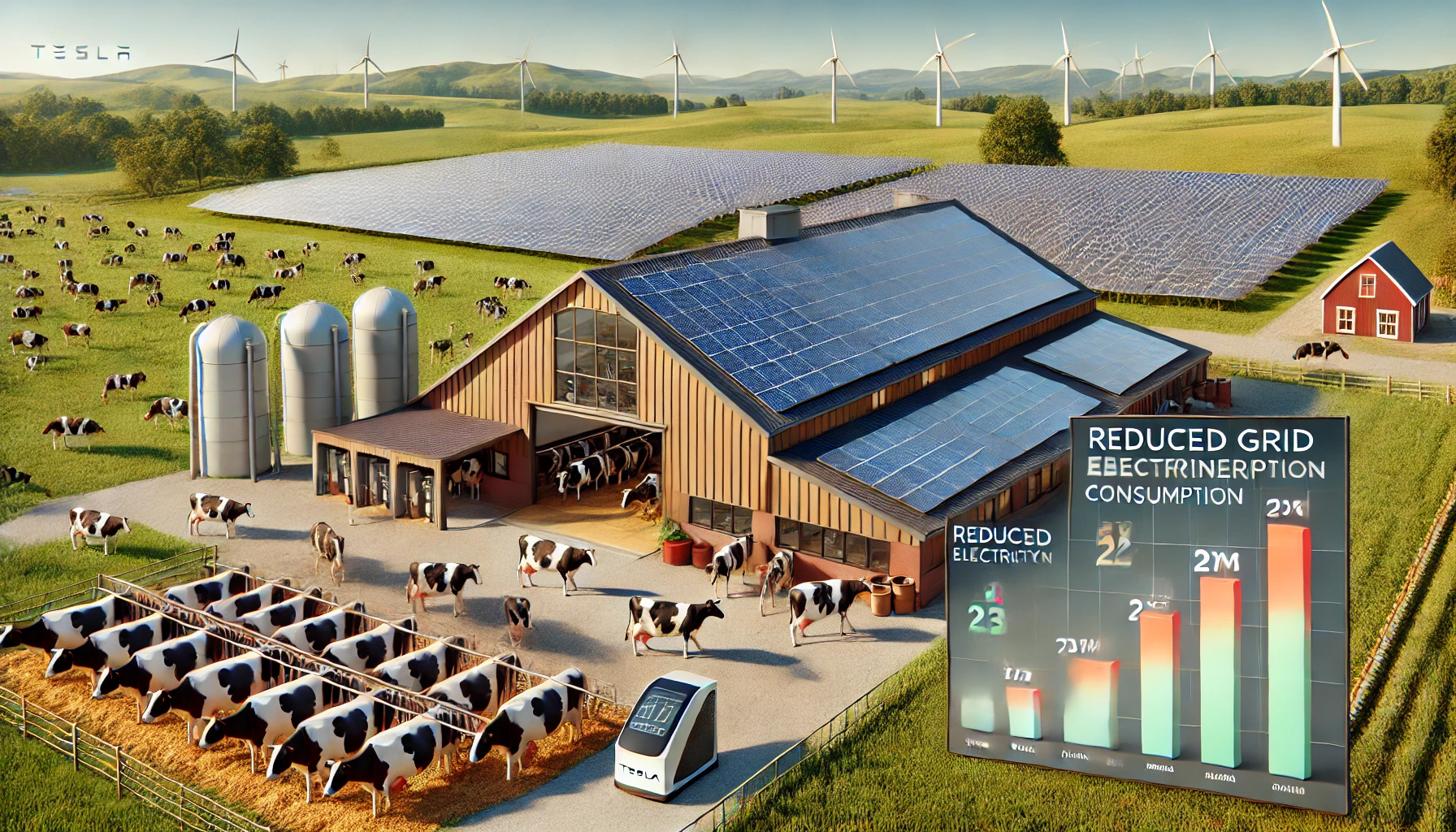AI-Powered Energy Management: Cutting Costs and Carbon Footprints in Dairy Farming
Researchers from the University of Galway and Atlantic Technological University applied Proximal Policy Optimization (PPO), a deep reinforcement learning technique, to optimize battery management in dairy farms, significantly reducing grid electricity consumption by 13.11%. This approach demonstrates the potential of AI to enhance energy efficiency and sustainability in agriculture.

In the quest to enhance energy efficiency and sustainability in dairy farming, researchers from the University of Galway and Atlantic Technological University have broken new ground by applying deep reinforcement learning (DRL) techniques, specifically Proximal Policy Optimization (PPO), to optimize battery management. Dairy farms are notorious for their substantial electricity consumption, which only grows as global milk production increases. With the global population steadily rising and the OECD-FAO Agricultural Outlook predicting a 1.6% annual increase in milk production by 2029, the sector faces escalating demands for energy. This study addresses the urgent need for innovative approaches to manage the energy-intensive processes in dairy farming, focusing on integrating renewable energy sources and utilizing advanced AI algorithms to manage energy storage and consumption more efficiently.
Harnessing AI for Sustainable Dairy Farming
Proximal Policy Optimization (PPO), a state-of-the-art DRL algorithm, stands at the core of this research. Unlike traditional methods, PPO limits policy updates to ensure greater stability and efficiency in learning, making it particularly suitable for the complex and variable environment of dairy farms. The algorithm's performance was meticulously compared with Q-learning and rule-based approaches, revealing significant improvements in reducing reliance on the electricity grid. The results were striking: PPO managed to decrease grid electricity consumption by 13.11%, a notable improvement over Q-learning and rule-based methods, which saw improvements of 1.62% and 2.56%, respectively. This showcases the algorithm's potential to revolutionize energy management in dairy farming by maximizing the utilization of renewable energy sources.
A Real-World Simulation for Optimal Results
The methodology of the study involved creating a detailed simulation environment that included solar photovoltaic (PV) systems, Tesla Powerwall batteries, and the power grid, representing a typical dairy farm's energy infrastructure. The data for electricity consumption, PV generation, and electricity prices were meticulously collected from Finland, providing a robust and realistic basis for the simulation. The PPO algorithm was then trained using this real-world data, optimizing battery charging and discharging decisions based on energy demand, PV generation, and dynamic electricity pricing. This comprehensive approach allowed the algorithm to learn and adapt to the specific energy consumption patterns of dairy farms, making real-time decisions to optimize energy use.
Maximizing Renewable Energy Utilization
Key findings from the study highlighted the PPO algorithm's remarkable ability to manage energy efficiently. It strategically charged batteries when electricity prices were low or solar power was available and discharged them during high-price periods or when solar output was low. This intelligent decision-making process was further evidenced by the agent's behavior, which consistently maximized the utilization of renewable energy and minimized the import of electricity from the grid. The effectiveness of the PPO algorithm was showcased in the daily management of battery charge levels alongside PV generation and electricity pricing. For instance, the agent would charge the battery during periods of low electricity prices or high solar output and discharge it when prices were high or solar power was insufficient, thereby optimizing energy use and reducing costs.
A Promising Future for Energy Management in Agriculture
The study's results underscore the immense potential of DRL in transforming energy management in dairy farming. By integrating advanced algorithms like PPO, dairy farms can achieve significant energy savings and enhance their sustainability efforts. This not only reduces operational costs but also contributes to the broader goal of reducing carbon footprints and promoting the use of renewable energy sources in agriculture. Future research plans include expanding the application of the PPO algorithm to include wind energy profiles, testing its adaptability and effectiveness across different geographical regions, and comparing its performance with various other DRL algorithms. These steps aim to further validate and enhance the algorithm's robustness and applicability in diverse settings.
This pioneering research marks a significant step forward in leveraging artificial intelligence to tackle the energy management challenges in agriculture. It offers a promising avenue for sustainable farming practices that can keep pace with the growing global demand for dairy products. The successful application of PPO in this context demonstrates the power of AI to drive efficiency and sustainability in even the most energy-intensive sectors. By continuing to refine and expand these techniques, the agricultural industry can look forward to a future where energy management is both smart and sustainable, meeting the needs of a growing population without compromising on environmental stewardship.
- FIRST PUBLISHED IN:
- Devdiscourse
ALSO READ
Controversial Hate Speech Bill in Karnataka Faces Strong Opposition
Former Naxalite Arrested for Alleged Maoist Support
Munde Hails Mahayuti's Sweep in Local Polls, Defames Opposition's Plot
Himachal Pradesh Expands Support Scheme for Urban Shopkeepers
Mahayuti Triumphs in Maharashtra Polls Amid Opposition Allegations










